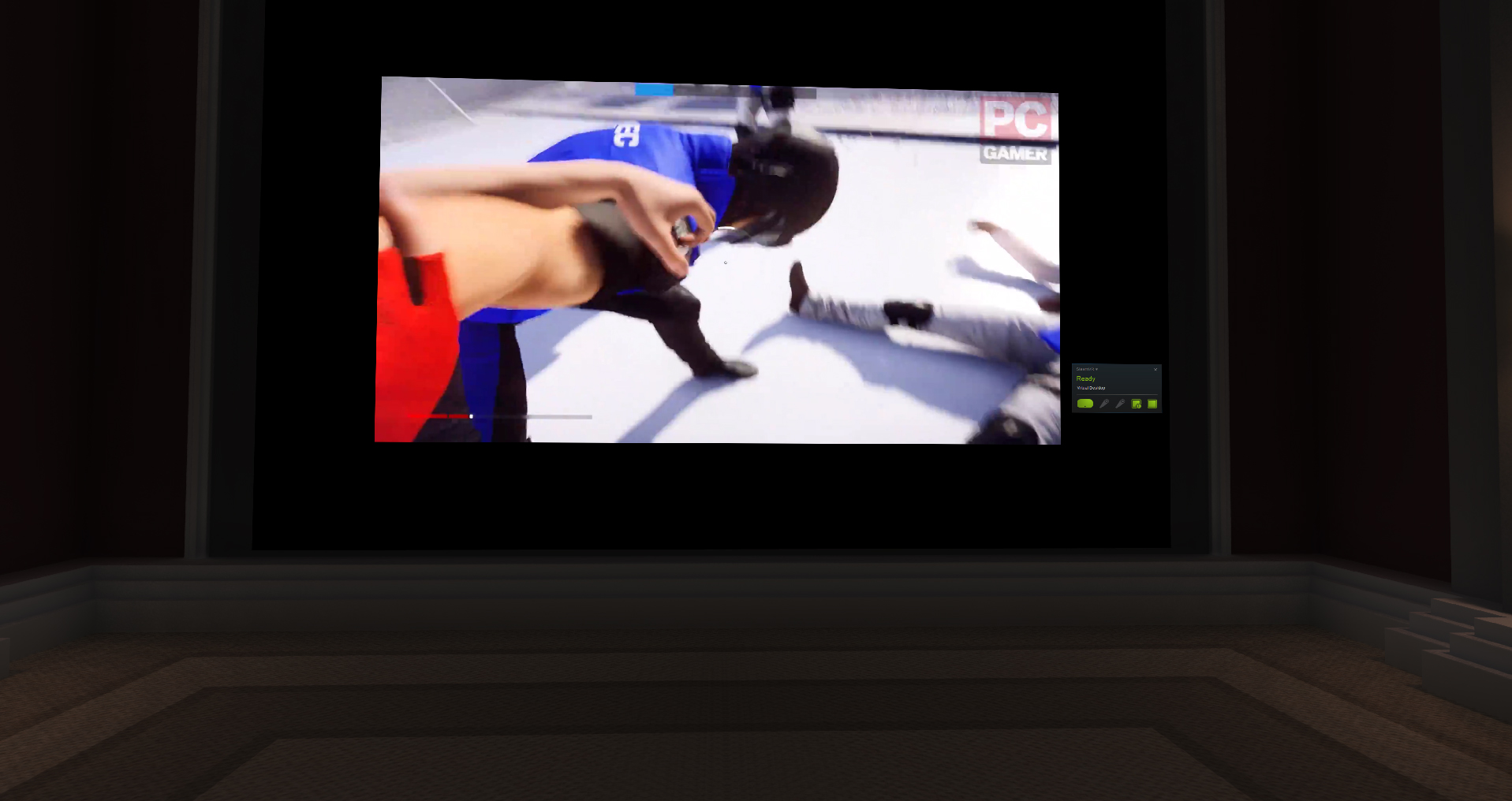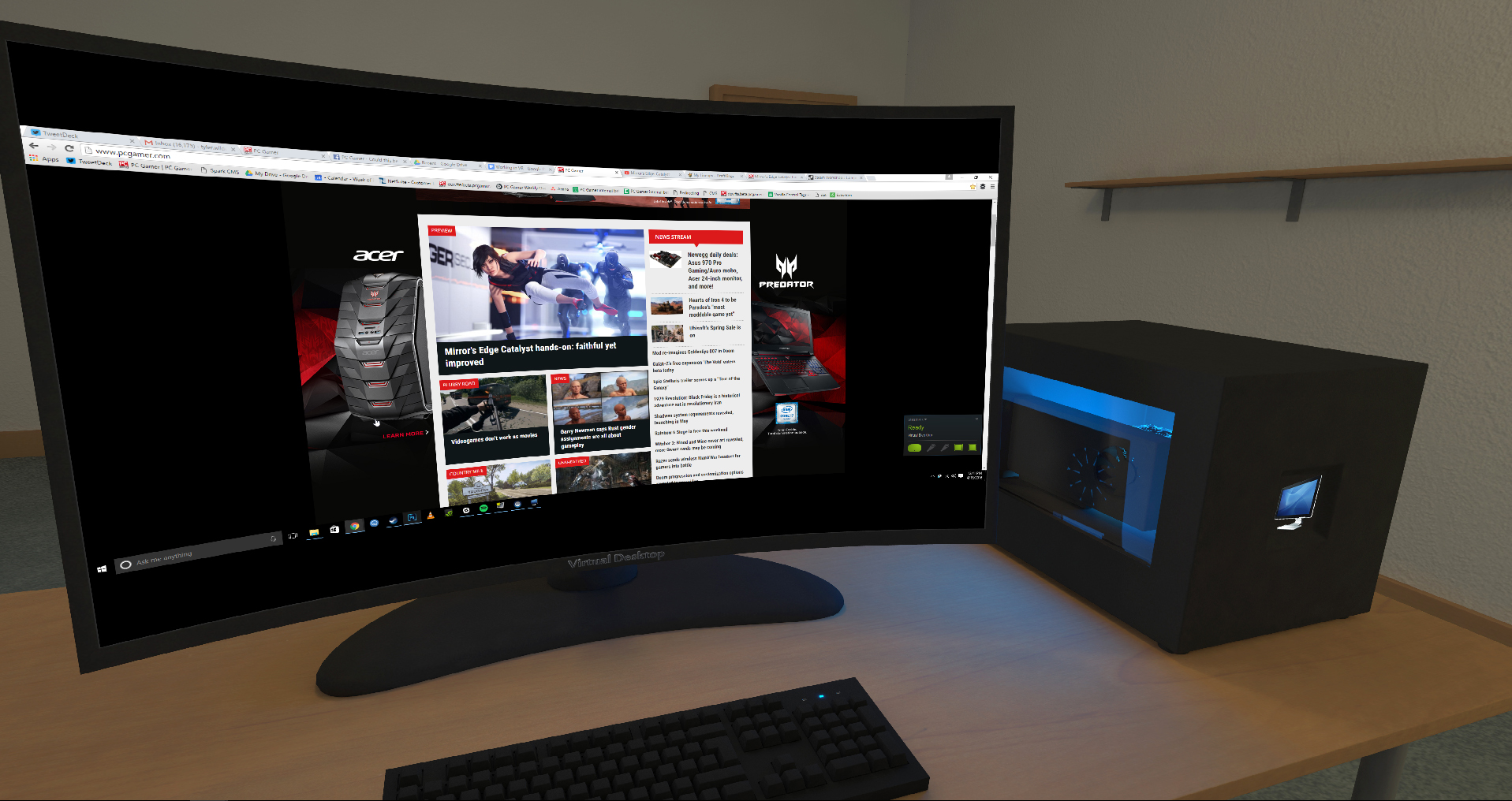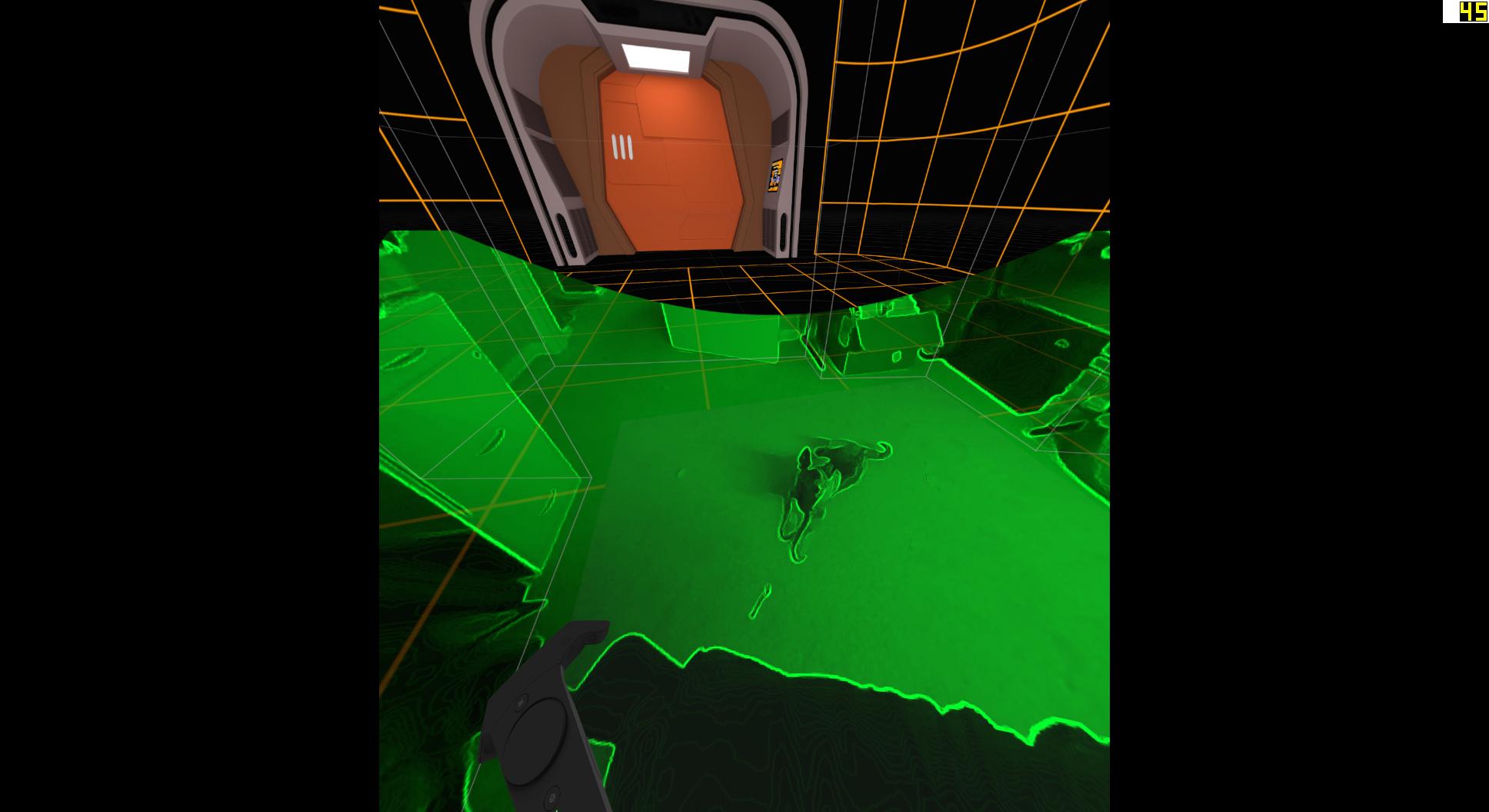How it feels to manage spreadsheets in VR

My monitors are floating in a starfield in front of me, curved around my head. If I look down and lean in, I can see green outlines of my hands positioned over my keyboard. To the left of my keyboard I see a cartoon version of my coffee mug. Even with a bulky HTC Vive headset over my eyes, I can easily pick it up without spilling. Taking a sip is considerably harder.
I’m typing this in the Virtual Desktop application made by Guy Godin. No surprise: regular space is much superior to VR when it comes to typing, because my keyboard is always there in my lower peripheral vision. But the Vive’s front-mounted camera—which was a fantastic addition—does help make a VR desktop workable. I can even double-tap the home button on the Vive controller to go full Predator-vision and check on my puppy, who’s barking at me because I have a black box strapped to my face.
Surprise: actually working in VR isn’t exactly practical right now. Virtual Desktop does provide a uniquely isolated environment away from the clutter on my desk, but my focus is drawn to constantly readjusting the virtual screen size and distance. A giant, distant screen fills my telescopic circle of vision with legible text, but I have to spin my chair around to see my emails on my second monitor. Too small, and it hurts to read. Too close, and it’s like focusing on the bridge of my nose. At any distance, text shimmers and ants run across edges.
I spent roughly two hours working in Virtual Desktop (doing more than typing the previous three paragraphs, to be clear), and after hour one my eyes were pretty burnt out. I found a screen size I could live with, but even with text blown up nice and large, it’s like reading through a thin layer of water and oil. I took a 10 minute break and went back. After hour two, I was very aware of the pressure around my eyes and on the back of my head, and my neck felt tense from looking around my big screen. The Vive Pre I’m using is comfortable, but not forever. When I went back to regular space, where text is sharp and I don’t have to point my head down to see my taskbar, everything looked crisper than it had before. Virtual reality made reality a little sweeter.
Virtual reality made reality a little sweeter.
So, no, the VR workspace of the future isn’t here yet. I suspect that future will involve lightweight augmented reality glasses which overlay high-definition screens on the world. I did enjoy watching sports and TV shows in VR, though. It really does feel like I’m looking at a giant movie screen, even though I know it doesn’t have the resolution to match. If I relax my eyes and let the pixels blend together, I stop thinking about the screens inches from my pupils and my virtual theater becomes convincing, if not close to the quality of a real theater. Free from distractions like Twitter, I watched a few innings of a ballgame and felt perfectly comfortable.
For playing non-VR games in VR, SteamVR already has a 'Theater' mode which projects them on a nice big virtual screen. It lacks the customization of Virtual Desktop, but does the job well enough that I'll probably just use it when I want to play flat games in VR. It's just simpler.

While it may not be a great way to read and write, Virtual Desktop is nicely-featured. It comes with multiple environments, as well as an editor and Steam Workshop integration for more. These can be cubemaps (360-degree photos like one of the space scenes it comes with), or models with designated screen positions, like an included home theater space. My favorite from the Workshop is Computer Room, which is a room with a computer in it. I like ridiculous things.
Keep up to date with the most important stories and the best deals, as picked by the PC Gamer team.
My only disappointment is that when I'm floating in a cubemap, I can only mirror my two actual monitors, not create as many virtual screens as I want. I expect it's possible to fake an extra monitor in Windows 10, though it seems it was easier in previous versions. Really what I want, though, is to just have my windows floating independently, maybe with a quick way to magnify them if they contain small text. I realize I'm asking for a totally new Windows GUI designed for virtual reality, though, which may be outside the scope of this project. Spacesys is trying at it, but it doesn't currently have Vive support as far as I can tell.

There are some other nice features to Virtual Desktop. You can load in 360-degree photos and videos (it can easily import the latter from YouTube) to experience in VR, which is a nice bonus, and there’s simple game launcher. The SteamVR overlay works fine for launching games, though, so Virtual Desktop isn’t vital in any way. Right now, it’s mostly a cool way to watch YouTube videos and Netflix.
It’ll get better, though. I expect games and 360-degree movies to dominate this lower-resolution VR era, but in a few years or so when everything is sharper and less sparkly, I can imagine myself popping a lighter headset on to read in solitude, or play a flat game on a giant virtual screen. Or I could turn my room into a virtual music production studio, messing with intangible knobs and sliders that replace the many windows I’d have open now. For now, though, I’ll stick to playing games in VR and typing out here, where my coffee mug can reach my mouth without bumping against a pound or so of plastic sitting on my head.

Tyler grew up in Silicon Valley during the '80s and '90s, playing games like Zork and Arkanoid on early PCs. He was later captivated by Myst, SimCity, Civilization, Command & Conquer, all the shooters they call "boomer shooters" now, and PS1 classic Bushido Blade (that's right: he had Bleem!). Tyler joined PC Gamer in 2011, and today he's focused on the site's news coverage. His hobbies include amateur boxing and adding to his 1,200-plus hours in Rocket League.


